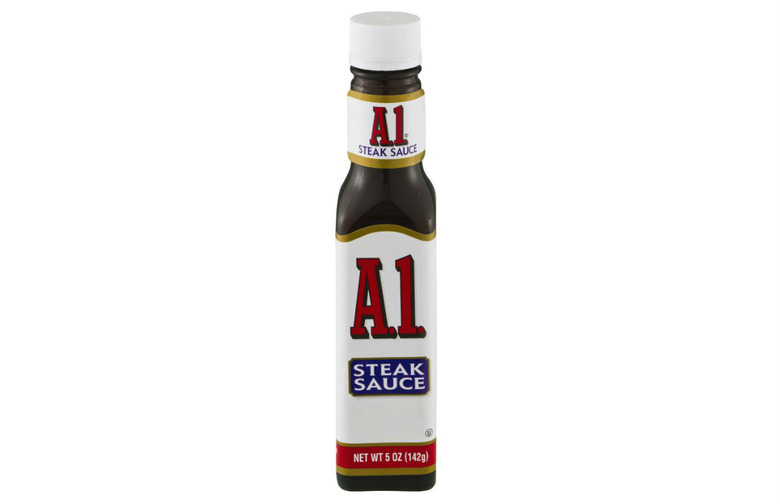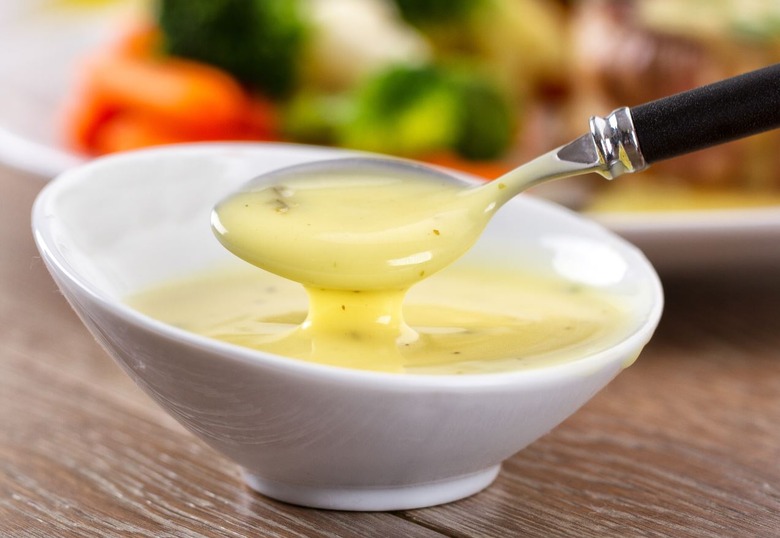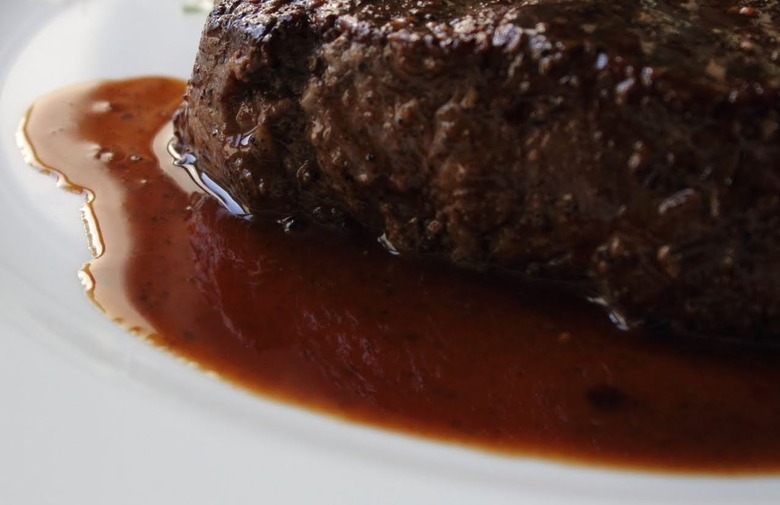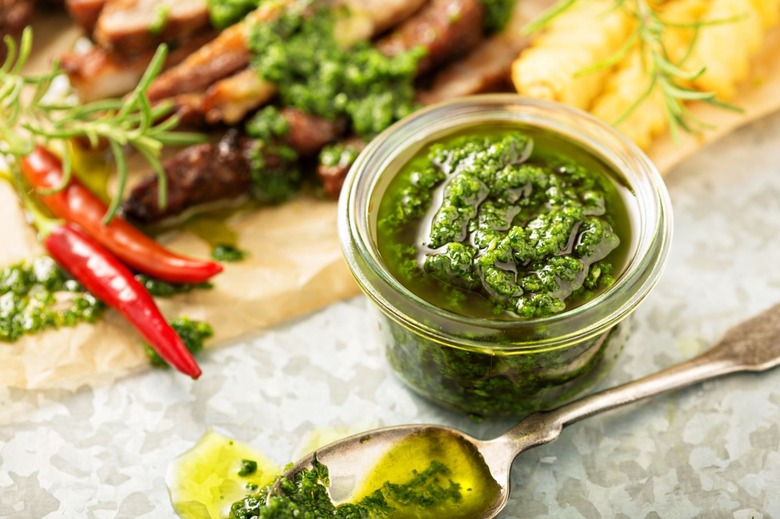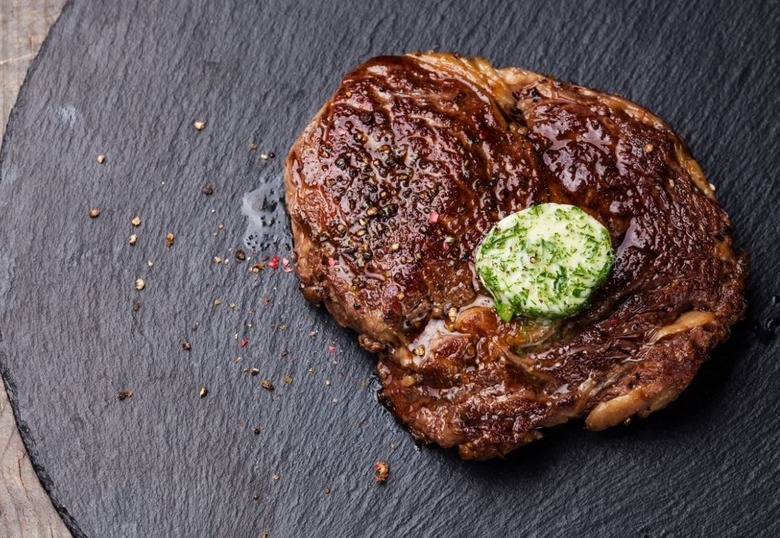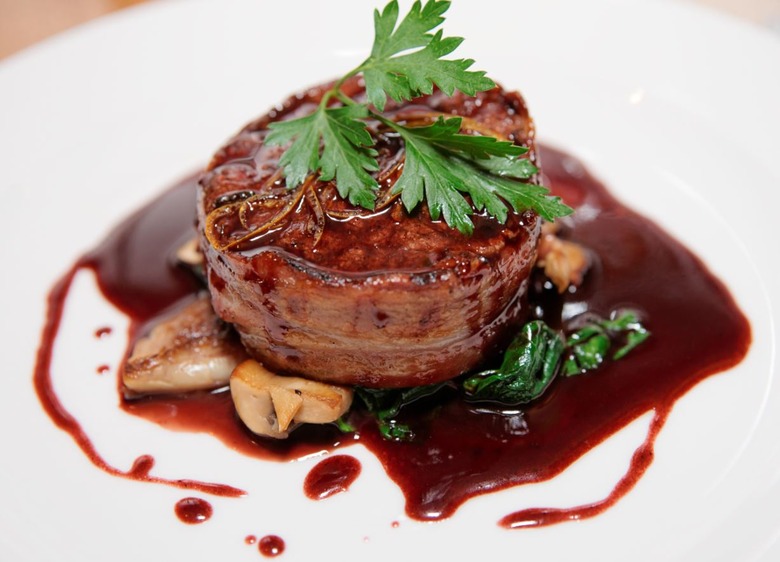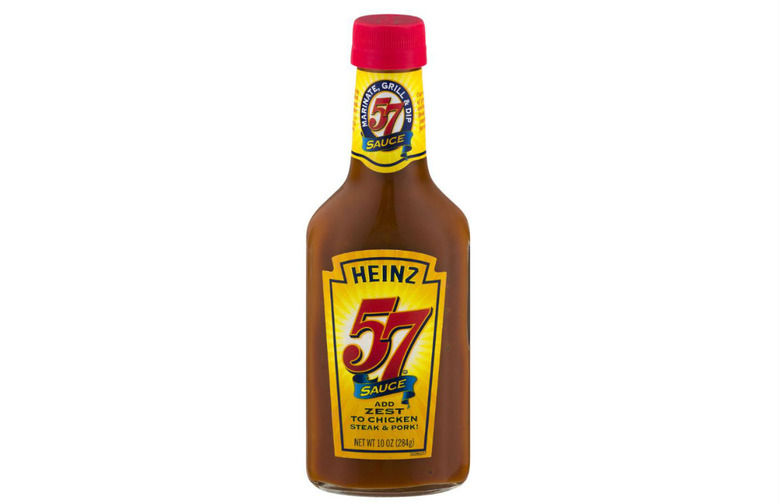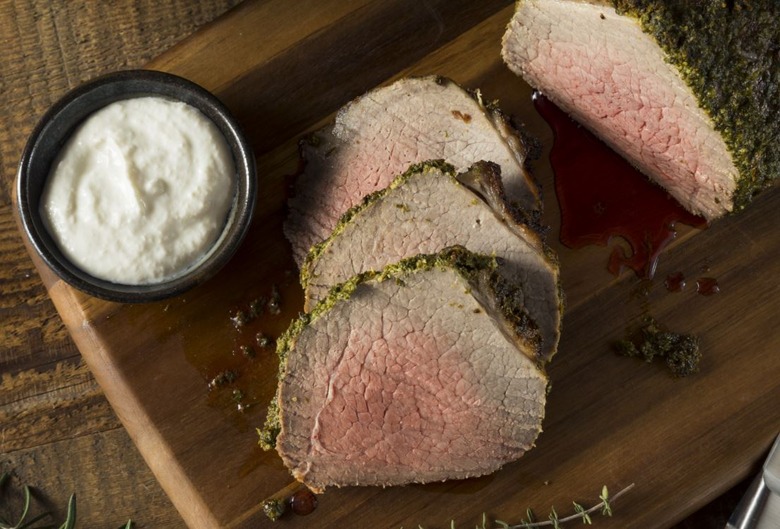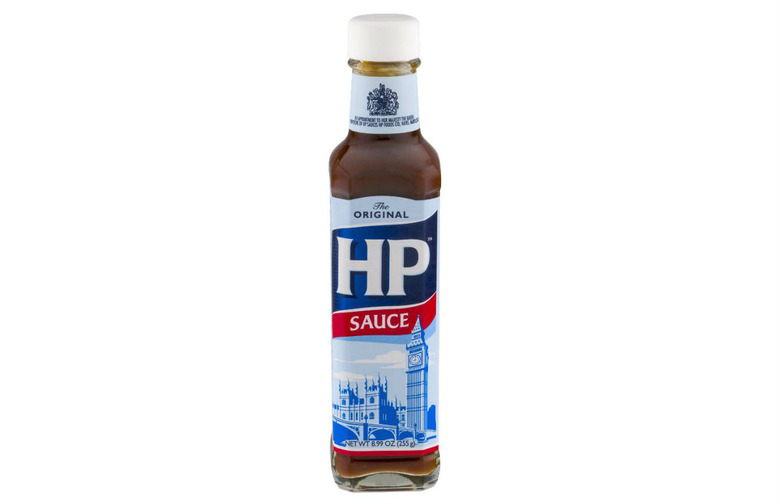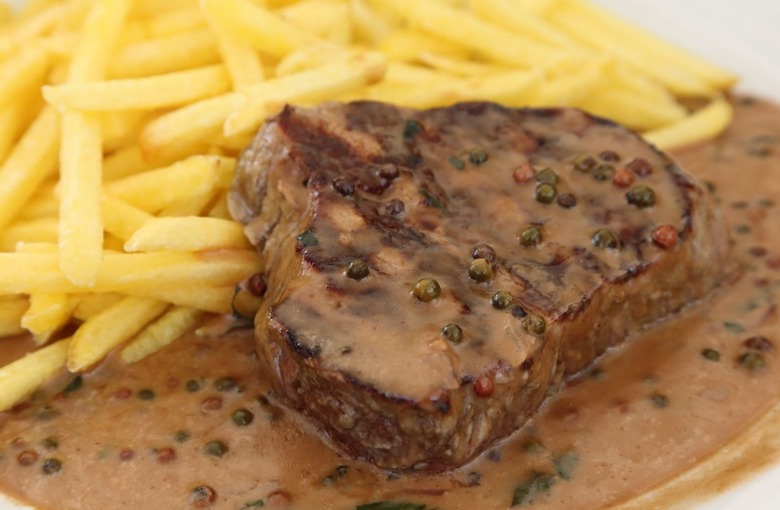A.1., Béarnaise, And More: The Definitive Guide To Steak Sauce Slideshow
Don't get me wrong: Steak is one of the most delicious foods on earth, even when it's only accompanied by a sprinkling of salt. A nicely seasoned slab of meat, given a nice sear on the grill or in a hot pan, doesn't need any coaxing to help it taste great. But if you can take a steak from a 10 to a 15, and add some variety to the flavor at the same time, then why shouldn't you? These 10 sauces will help kick your steak up about 50 notches.
A.1.
A.1. was invented back in 1824 by the personal chef of King George IV, the famous Prince Regent of Britain's Regency period. Today it's owned by Kraft, but the recipe hasn't changed much over the years: It contains an umami-rich mix of tomatoes, raisins, vinegar, sugar, salt, oranges, garlic, onions, and herbs and spices.
Béarnaise
This steakhouse favorite, similar to hollandaise, adds a major dose of richness to your steak thanks to its two primary ingredients: clarified butter and egg yolks. Once those two are emulsified, the sauce is finished off with white wine vinegar, shallot, pepper, and herbs, including tarragon and chervil. This luxurious sauce was first served in 1836 at a high-end restaurant near Paris.
Bordelaise
A classic French sauce (Bordelaise translates to "from Bordeaux"), Bordelaise is a rich brown sauce made with red wine, demi-glace, shallots, plenty of butter, and (traditionally) bone marrow.
Chimichurri
This heady mixture of parsley, garlic, oil, oregano, red pepper flakes, and white vinegar is a traditional Argentinian steak topping, and pairs best with a grilled skirt steak. It's uncooked, so the flavors don't lose their piquant punchiness. It most likely can trace its origins to Basque cuisine.
Compound Butter
While not necessarily a sauce, you'll definitely see plenty of steaks topped with compound butter (and you should consider topping yours with it, too). Technically, compound butter is butter that's been mixed with anything, but when prepared specifically for steaks, there are a few standbys: There's beurre à la bourguignonne, butter combined with finely mashed garlic; maître d' butter, butter mixed with parsley and lemon juice; and café de Paris butter, which is mixed with a variety of optional herbs and spices, including rosemary, tarragon, mustard, parsley, shallots, garlic, Worcestershire sauce, anchovies, paprika, and other seasonings. Butter mixed with finely chopped black truffle is also very nice indeed. The mixture is usually rolled up into a log, chilled, sliced, and placed on top of the hot steak to melt.
Demi-Glace
This rich French sauce is traditionally made by mixing veal stock with espagnole sauce (a very strong traditional French brown sauce) and reducing the mixture by half. It can be a labor-intensive process, but the end result is smooth, rich, meaty, and very luxurious.
Heinz 57
Heinz 57 sauce got its start as Heinz Beefsteak sauce, but the name was changed in 1940. This ketchup-based sauce is kicked up with a little mustard, garlic, onion, raisin concentrate, and other natural flavors.
Horseradish Sauce
Because horseradish sauce is so easy to make, most restaurants make it from scratch using slightly different ingredients. Two of them never change, however: grated horseradish and sour cream. Some mustard, vinegar, salt, and pepper should be all you need for a perfect accompaniment to steak (especially steak sandwiches, prime rib, and roast beef).
HP
HP is the most famous of the British "brown sauces," which also include Chef, Daddies, OK, and Wilkin & Sons. These were all invented at around the turn of the twentieth century and have been extremely popular in the UK ever since. HP sauce was invented by a Nottingham grocer named Frederick Gibson Garton in 1895; he named it H.P. in honor of the Houses of Parliament. It contains malt vinegar, tomato, dates, tamarind extract, and spices, and is a major umami bomb. It complements steaks as well as soups, stews, and meat pies.
Sauce Au Poivre
Steak au poivre is occasionally just crusted with crushed peppercorns, but a true steak au poivre is also served with sauce au poivre, also called sauce poivrade. The sauce is creamy and peppery, and traditionally gets an extra flavor boost from the addition of a little Cognac, which is flamed off before serving. In our opinion, it's the perfect sauce to complement a nice filet mignon, and makes for a very romantic home-cooked dinner.

